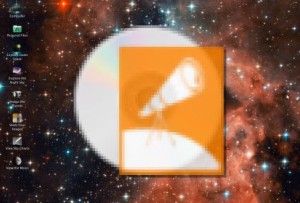Greetings fellow astrophiles,
Wintertime CNY amateur astronomy is not for the faint of heart, and certainly no good for those with bad circulation. While many of the very best objects grace the nighttime skies from roughly November to March (I’m talking the primo sights for the Northern hemisphere, including the Andromeda Galaxy, the Pleiades, and the Orion Nebula), bouts of precipitation mix with often bone-chilling temperatures to keep even the most dedicated observes indoors. I’ve found myself pondering on more than one occasion the price of an atomically-flat all-diamond window that would let me scan the heavens from the comfort of my own living room. An important take-home from Bob Piekiel’s wintertime Baltimore Woods sessions is that, after sunset, the thing heating Marcellus is YOU – if you’re not dressed for an ascent of Mt. Everest, chances are good you’re going to leave early with the knowledge that standing still at night requires a few additional layers of insulation. And even the pros forget – Ryan and I can recall at least one especially frosty session at Baltimore Woods that had us both moving slowly for 3 days after.
That said, you don’t have to spend the Winter months just cleaning your eyepiece case, replacing all your batteries, arguing in a cloudynights.com thread with someone named “Myopic from Minnesota,” and googling for interesting astronomical events in the upcoming year. Instead, you could be learning a bit about computer operating systems, updating your GOTO scope’s database with the absolute latest in near-Earth objects and exoplanets, greatly advancing your astrophotography skills, and making your own darned star charts.
 Distro Astro (www.distroastro.org) is a Linux distribution specifically designed for astronomers of all abilities – and I do mean all abilities. Astronomy is one of those fields where someone needs a program to do A, they write a program for A, and they often make it freely available for anyone else to do A or test B. These developers might be hobbyists wanting to turn Newton’s equations of motion into a learning tool, or might be serious programmers and professional astronomers wanting to process the latest Keck and Hubble data for analysis. The Distro Astro Team has collected some of the best free software across all areas of amateur astronomy and wrapped it up into a Linux distribution that you can install on your “outdoors” computer, giving you a suite of tools that will keep your astro-gears spinning all winter until you step outside for the next Messier Marathon.
Distro Astro (www.distroastro.org) is a Linux distribution specifically designed for astronomers of all abilities – and I do mean all abilities. Astronomy is one of those fields where someone needs a program to do A, they write a program for A, and they often make it freely available for anyone else to do A or test B. These developers might be hobbyists wanting to turn Newton’s equations of motion into a learning tool, or might be serious programmers and professional astronomers wanting to process the latest Keck and Hubble data for analysis. The Distro Astro Team has collected some of the best free software across all areas of amateur astronomy and wrapped it up into a Linux distribution that you can install on your “outdoors” computer, giving you a suite of tools that will keep your astro-gears spinning all winter until you step outside for the next Messier Marathon.
Version 3.0 of Distro Astro just came out (November 9th, to be exact) and is available for free download from the distroastro.org website. Instead of re-listing all of the features here, I refer you to the official item list on the distroastro.org website, then a few good intro reviews describing the operating system and suite of programs. If we’ve enough local interest in a walkthrough of Distro Astro, a full *indoors* demonstration might make for a chance to introduce some of the CNY amateur astronomy community to some of the Linux gurus in the Syracuse Innovators Guild (full disclosure – I’m a member of SIG as well and suspect the facilities would be perfect for such a lecture).
And speaking of Distro Astro presentations, CNYO’s own Christopher Schuck just happened to take over one of Stellafane’s lecture spots this past August in order to introduce Distro Astro to just the kind of audience it was developed for. For a quick tour of some of the pick-hits in Distro Astro, I invite you to check out the youtube video of his presentation above.
For another discussion of Astro Distro, check out this video from a Linux group in Perth, Western Australia: www.youtube.com/watch?v=qvC5vj74lGE.
If you’ve any questions about getting it all up-and-running, I direct you to either the Distro Astro Facebook Page or to CNYO’s own Facebook Page (the collective know-how on our Facebook Page is probably enough to get new users over any initial humps).









